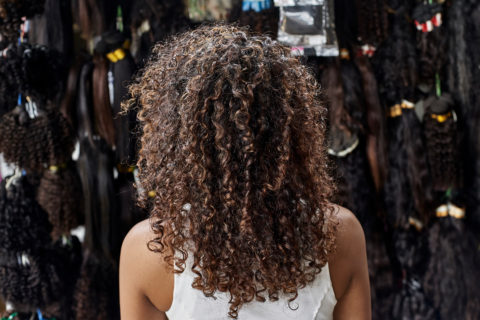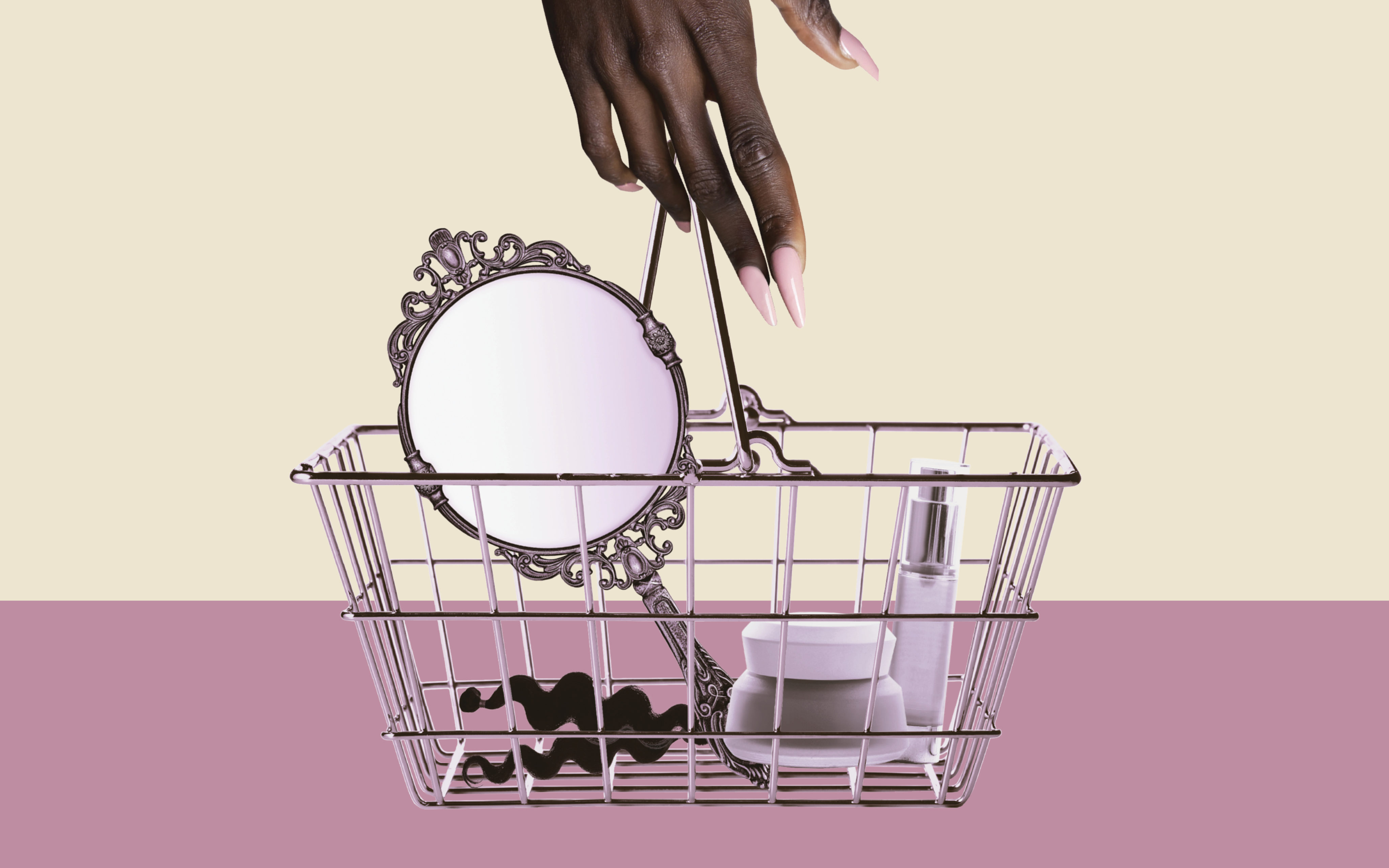This is Texture Talk, a column that deep dives into the dynamic world of curly hair, from crowns of curls that are free flowing to strands that are tucked away in a protective style.
My first visit to a beauty shop is one I’ll never forget. It was in Detroit, during one of many family day trips. That afternoon, my dad and brother were visiting their own grooming hub: a barbershop around the corner, where the bass of hip-hop, the boom of laughter and the buzz of electric razors blended into an intoxicating chorus. My mom grabbed my baby sister and me, and we walked until we reached a nondescript storefront with a sign that simply read “Beauty Supplies and Salon.” A window full of wig-wearing heads gazed blankly at passersby. Mom pushed the door open, and the chimes on the hinge announced our presence. I looked around, and with a sharp intake of breath I realized where I was—a Black beauty heaven on earth.
My mother walked briskly down the aisles searching out the products we couldn’t find in our hometown of London, Ont. I quietly trailed behind her, tracing my finger over the colourful boxes and bottles that lined the shelves. The boxed hair dye display was by far my favourite. Rows and rows of packages featuring beautiful Black women showing off kinks, coils, waves, braids and straightened hair in all shades caught my eye. They smiled at me blissfully, and I noted some of their sultry over-the shoulder gazes. I admired the variety of potential hair hues, all described as shades of black. I picked up a box of “Jet Black” and held it next to a box of “Soft Black.” The difference was subtle but distinctive. It was an early message for me that while being Black may sound straightforward, the nuance and plethora of our beauty is not.
I waited quietly for my turn to get my hair done, secretly hoping that the grown women chatting around me about men and sex and the coworkers they couldn’t stand wouldn’t notice I was listening and digress. I watched as they each took their turn in the stylist’s chair, timidly unwrapping their head scarves and apologizing for the sorry state of their hair. I studied how the hairdresser whipped out her tools, creams, sprays and potions and transformed them all — including my mother and me — into beautiful, confident beings who couldn’t pass a reflective surface without a satisfied glance.
Part of the magic, beyond the inspirational visuals, was what the supply store could offer: a way to create something stunning for yourself in the comfort and privacy of your own space. My excitement about my mother’s purchases — which she made based on what looks she wanted to create for us — would turn into a sense of pride when we glimpsed the final results in the bathroom mirror and witnessed the transformation we had concocted on our own.

It went beyond hair, too. When I got older, my friends would raid the aisles of drugstores and department stores looking for foundation shades like “Tawny” and “Alabaster” while I hung back quietly and decided on a clear lipgloss or two. But at the beauty-supply store, there was no question of whether my beauty mattered. Mom was always able to choose from a wide variety of shades for her deep-brown skin as well as for her signature dark-red lipstick. I soon learned how to experiment with my own style, which often included the kind of accessories found by the cash register — glamorous hoop earrings, hair beads, head wraps and a mass of other promising trinkets. I didn’t have to wonder if I would find items that fit how I wanted to look. I just had to walk the aisles and grab as much as my budget would allow.
However, like with any utopia, that space of freedom and creativity also contained messages that confused me about my relationship with beauty and Blackness. Early on, the boxes of Just for Me hair relaxer featuring adorable young Black girls with bouncy, healthy-looking straight hair made me question whether my thick ropes of braids were pretty enough. Was there another way my hair was supposed to look? My mom always pushed me past another particular aisle, telling me to keep walking. It housed skin-bleaching products that had descriptors explaining in no uncertain terms that lighter skin was preferred.
Now, when I glance around the aisles of any supply shop, I feel they tell my story. There’s the beloved hair dye section where I finally picked up a box of “Red Hot Mary” (named for Mary J. Blige); it promised much, but my hair didn’t come out as bright as I had hoped. And there’s the dye my mom eventually asked me to apply for her to help cover her grey. I’m teased by all the creams and potions I experimented with ad nauseam to “elongate” and “stretch” my natural kinks and curls after I decided I was done with the damage caused by chemical straighteners. (I’d hoped I would look like Tracee Ellis Ross; I didn’t.) As a mother, I know these stories are far from over. When I introduce my own two young daughters to these hallowed halls of Black beauty, I know they’ll find the magic in discovering what it means to feel beautiful.
This article first appeared in FASHION’s May issue. Find out more here.
